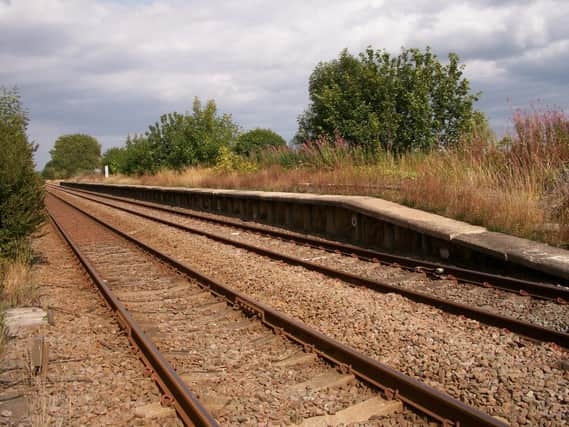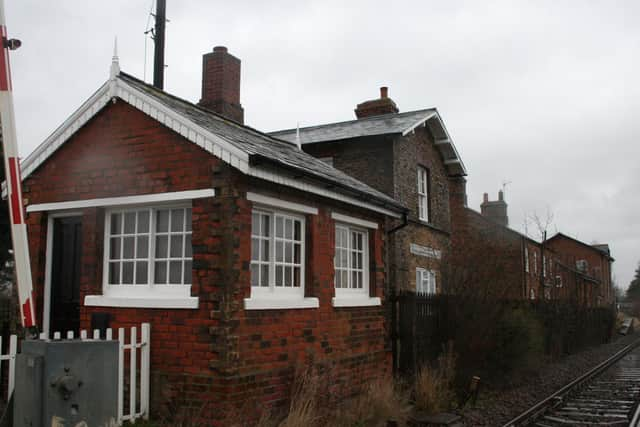Lockdown enables author to complete final chapter of the story of East Yorkshire level crossing disaster that killed 12 men


Richard Jones originally published an account of the Burton Agnes level crossing disaster in 2013, recounting the day 12 men lost their lives when a military lorry was hit by a train on the Hull to Bridlington line in 1947.
Ten of the victims were German prisoners who had yet to be repatriated to their home country after the end of World War Two, and who were part of a group sent from a camp in Darlington to help with the harvest in the East Yorkshire village of Rudston.
Advertisement
Hide AdAdvertisement
Hide AdThey were being taken back to Burton Agnes Station for their journey home by two British Army sergeants when the lorry driver's foot appeared to slip and he accelerated through the wooden level crossing gates and into the path of the express train, which was travelling at 60mph and was not stopping at Burton Agnes. Many of the 16 survivors lost limbs and it was only by sheer luck that the whole train did not derail.


Mr Jones succeeded in having a plaque erected at the crash site after the first edition of his book about the disaster was published, and after an unveiling ceremony arranged by the British Legion, thought the tragedy would again fade from collective memory.
Yet a trickle of emails soon began to arrive, many of them from German readers who were related to the men who had lost their lives during a strange 'limbo' period of semi-captivity when they were stranded and unable to return to a country in post-war turmoil.
Their information enabled Mr Jones to piece together their stories, and they supplied him with cuttings from German newspapers and even the original telegrams sent to the victims' families.
Advertisement
Hide AdAdvertisement
Hide AdWith time on his hands during lockdown, he compiled a new, final chapter for the book and has now published a second edition.
The experience has left him humbled at the impact his research has had on the descendants of young men whose deaths were quickly overlooked following a conflict in which millions had already died.
Mr Jones rejects the theory that lingering hostility towards the prisoners from the local community allowed the incident to be forgotten about - he says after the war ended, the remaining German and Italian prisoners, many of whom were sent to work on farms, were liked and appreciated by the public. Many were reluctant to return home to the devastation and division of war-ravaged Germany, and instead enjoyed a more settled life in the British countryside, where they were allowed to visit pubs and mix socially. Many married local women and remained permanently in Britain.
It was perhaps this kindness towards the sort-of captives that sealed the fate of the 26 prisoners aboard the third lorry-load of men being driven from Rudston to Burton Agnes that fateful morning. They were initially meant to march to the station, before their British Army guards instead decided to give them a lift.
Advertisement
Hide AdAdvertisement
Hide Ad"It's a miracle any of them survived actually, though many did lose limbs. I haven't managed to make contact with any survivors still living, though they'd be in their 90s by now," said Mr Jones.
"It's hard to say exactly why the crash was forgotten about. I find a lot of people who live close to the scenes of past disasters have no idea that they happened - they can be oblivious.
"It's surprising considering there have been three serious crashes on the Hull to Bridlington line in less than 100 years - in 1927, 1947 and 1986. When Burton Agnes happened, we weren't at war any more and the Germans were popular with the locals. It did make the local papers, but by then, people had been through a hell of a lot, with the Blitz and things. Maybe 12 more deaths meant nothing to them."
As well as the German relatives, he was also contacted by a British woman whose grandmother, then aged 14, and great-grandfather had been close to the accident scene and heard the crash before the girl's father went to give first aid. Mr Jones also spoke to an Australian woman whose family had been waiting at Burton Agnes Station that day, and had been mentioned in the first edition of the book.
Advertisement
Hide AdAdvertisement
Hide Ad"Some of these people who helped me have since died, but they've given me enough information for an extra chapter. I was sent photos of the German victims, personal stories of their relatives' journeys to see their graves at Cannock Chase cemetery, newspaper cuttings - which didn't go into a lot of detail about the crash."
Intriguingly, Mr Jones discovered during the course of his new research that on the first anniversary of the crash, there was a remarkably similar incident on a now-disused branch of the Hull to Bridlington line in which three Polish farm labourers died.
Today, 60mph trains still thunder past the level crossing at Burton Agnes Station, which closed to passengers in 1970 and is now three private houses. Yet thanks to the determination of those touched by tragedy 80 years ago, its darkest hour will not be forgotten.